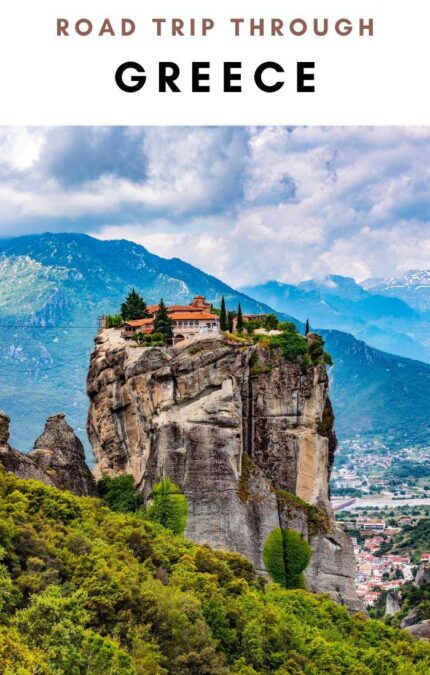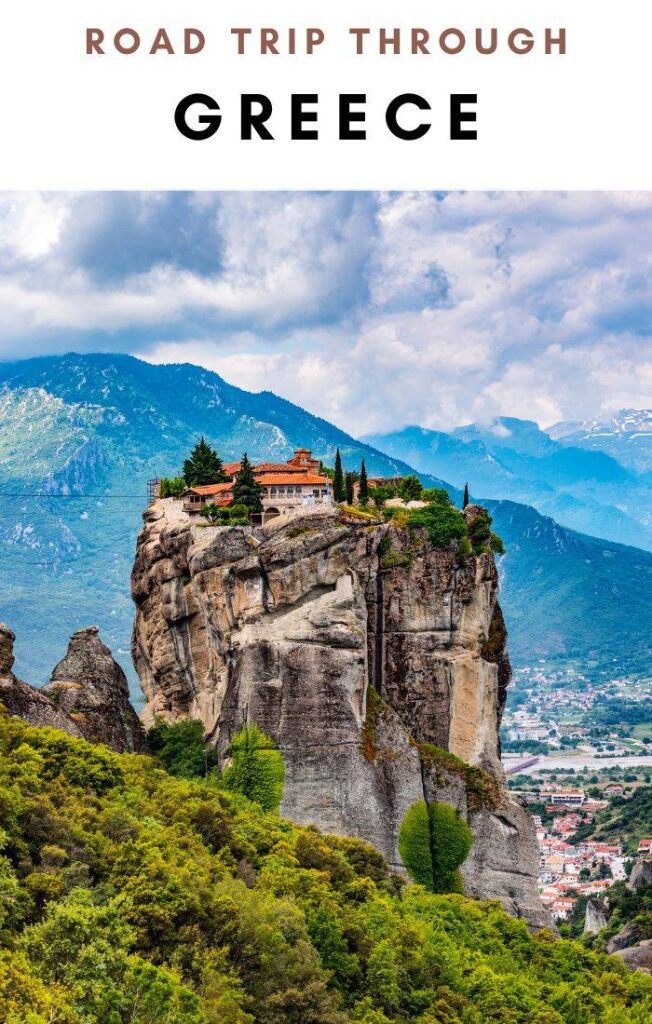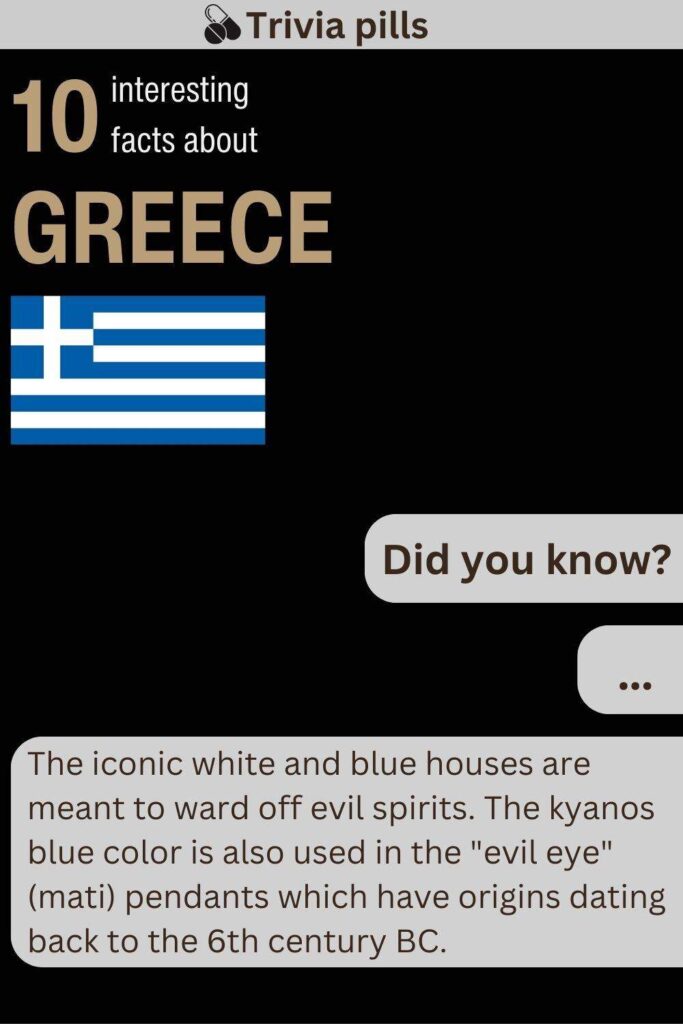Meteora is one of the most inspiring and mystical sites in Greece and the second most visited place in the country (after the unchallenged Acropolis of Athens).
The imposing vertical rocks were formed 60 million years ago from movement in the Earth’s crust, and the constant weathering through millions of years smoothed the rocks.
The region has been inhabited by humans since the “dawn of time”. Theopetra Cave, near the town of Kalabaka, is considered the oldest human-inhabited cave in the world, with occupation estimated at between 23000 and 50000 years ago.
For more information, check out these articles on my visit to Meteora, and the Greece Road Trip
Starting in the 14th century, Eastern Orthodox monks began constructing monasteries to create a community of the already-present hermits who had settled in the caves of the rock cliffs. Today, out of the originally 24 monasteries, only six can be visited and are inhabited by a handful of monks.
Visiting Meteora is a breathtaking experience in any form. The small tourist town of Kalabaka or the smaller village of Kastaki at the foot of the rock formations, is a wonderful place to spend some time, enjoying the views and calm and serene atmosphere while eating delicious Greek cuisine. Traveling upwards through the winding road within the Meteora is breathtaking, and there are innumerable spots to simply stop the car and take in the views. That would already be enough, be it not for the incredible Greek Orthodox monasteries that have been built on the plateaus on top of the formations.
Here you will find all the most important information on how to get the most out of your visit to Meteora and some tips from my experience.
Basic info
Meteora are a series of rock formations in the region of Trikala in Thessaly, mainland Greece which formed 60 million years ago.
The caves in the cliffs and surrounding region have been inhabited by humans since prehistoric times and during the 14th century hermit monks which were previously living an ascetic life at Meteora constructed a series of monasteries on top the monoliths.
The complex became the second most important monastery community of the Eastern Orthodox Church after that of mount Athos.
About
The name Meteora is related to meteōros, which means “elevated” or “high/suspended in the air”, and is related to the meteor celestial objects. The word is perfect for these rock formations, as seeing them is akin to gazing at something otherworldly and can really inspire a sense of looking at a lunar landscape.
There are 24 monasteries, with only 6 open to the public to this day and 12 in ruins. The rest are closed to the public.
The monasteries

The history of the Meteora monasteries starts between the 9th and 10th centuries when hermit Orthodox Christian monks isolated themselves in the caves of the Meteora cliffs.
For several centuries, monastic life remained in this unorganized manner until the 12th century, when a monk by the name of Nilos created the first basis of a community. The scattered monks were gathered, and the first set of rules and cannons were established.
It was not until the 14th century that the monk named Athanasios the Meteorite established the first monastery on the second-highest and most imposing of the Meteora rocks. Being the founder of this highly important monastic community, Athanasios is one of the most important figures in Orthodox Christianity.
After the founding of the first monastery, many monasteries were built around Meteora, up to a total of 24 during the following 300 years. From the 17th century on, the decline of monastic community started to quickly decline, until this day, when only six active monasteries remain.
As said earlier, there are six monasteries open to the public that can be visited. If traveling by car, all of them are near each other and very easy to reach.
Starting from the approach from the town of Kastraki these are:
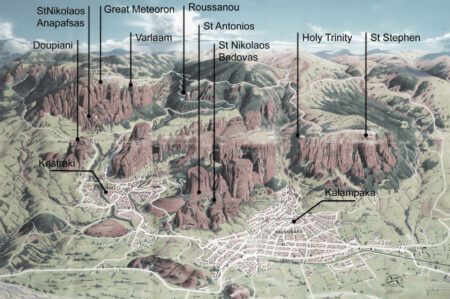
Agios Nikolaos: The Holy Monastery of Saint Nicholas of Anapafsas is the first that can be encountered from the town of Kastraki. It is the smallest and was used as a resting stop for the pilgrims (anapafseos meaning “resting”). It is a tall, rectangular building with successive levels, has no courtyard, a small church of St. Anthony, and the chapel of St. John Prodromos.
Roussanou: The second which will be found is the Monastery of St. Barbara or Roussanou. It is the lowest one of the six monasteries, but impressive as it uses all the available space on the plateau on top of the rock, making it seem like it was carved out of stone. The monastery is a three-story structure and is dedicated to the Transfiguration of Jesus Christ with the Katholikon built in 1545. Since 1980 the monastery has been used as a nunnery.
Varlaam: The Holy Monastery of Varlaam is the second largest monastery and is located near the larger Grand Meteoron. It owes its name to the hermit Varlaam, who first inhabited the rock in the 14th century. In 1518 the chapel was heavily modified and renewed and dedicated to the Three Hierarchs of Eastern Orthodox Christianity (Basil the Great, Gregory the Theologian, and John Chrysostom).
Great Meteoron:
The Holy Monastery of Great Meteoron (or Megalo Meteoron) is the largest and oldest and as stated above, the founding of this monastery in 1350 kickstarted the building of other monasteries in the region.
It is also known as the Holy Monastery of the Metamorfossis (Transfiguration of Christ) and is a male monastery.
From a visitor’s perspective, the Great Meteoron is the most comprehensive visit as it includes the main museum. Also, the sacristy is interesting as it contains skulls of the monks who have lived in the monastery over the years.
Holy Trinity:
The Monastery of Holy Trinity (or Agia Triada) is the most iconic in terms of photography as it is perched on top of an isolated pillar, exemplifying the architecture of the monasteries of Meteora.
Arguably the most famous it was also featured in the 007 movie “For Your Eyes Only”. It suffered a lot of damage during the World War and was rebuilt. It is arguably the most difficult one to reach as it requires following a path downhill to the foot of the cliff and then up the 145 spiraling steps into the monastery.
The monastery is dedicated to the Holy Trinity and was built in 1488 by the monk Dometios. Inside is the chapel of St. John the Baptist, the catholicon, and a large terrace on the highest point of the rock which offers a wide view of all the other monasteries.
Agios Stefanos: Very close to Agia Triada is the Monastery of Saint Stephen. It is the first to be encountered if coming from the city of Kalabaka. This is the easiest of the 6 to reach as it doesn’t involve steps and is rather accessed by crossing a small bridge.
It was founded by the monk Antonios Kantakouzenos and became Stauropegic (independent from the local bishop) in 1545. This monastery was also severely damaged during WWII. The main cathedral is dedicated to Saint Charalambos and this monastery, like Rousanou, was also converted into a nunnery in the mid 1900.
Prices
Each monastery requires a 3 euro ticket to be purchased at the entrance
How many days
It is recommended to spend 2 days to see all six monasteries. Each one is unique. If it must be done on a day trip or you don’t want to see all of them, I would recommend the mandatory Great Meteoron and Varlaam – the two largest ones, coupled with another smaller one. My personal favorite of the small monasteries is St Nicholaus, but Holy Trinity is the most famous and most photographed.
Best time to visit
Each monastery has specific opening hours and is closed on certain days, as well as having timetables based on season as can be seen below
Summer season (April – October)
| Monastery | Opening hours | Closed on |
| Agios Nikolaos | 9:00 – 17:00 | – |
| Varlaam | 9:00 – 16:00 | Friday |
| Roussanou | 10:00 – 15:00 | Wednesday |
| Great Meteoron | 9:30 – 15:00 | Tuesday |
| Holy Trinity | 10:00 – 16:00 | Thursday |
| Agios Stefanos | 9:30 – 13:30, 15:30 – 17:00 | Monday |
Winter season (November – March), basically the same opening hours as summer but 1 hour before closure
| Monastery | Opening hours | Closed on |
| Agios Nikolaos | 9:00 – 16:00 | Friday |
| Varlaam | 9:00 – 15:00 | Thursday, Friday |
| Roussanou | 10:00 – 14:00 | Wednesday |
| Great Meteoron | 9:30 – 14:00 | Tuesday, Thursday |
| Holy Trinity | 10:00 – 15:00 | Wednesday, Thursday |
| Agios Stefanos | 9:30 – 13:00, 15:00 – 17:00 | Monday |
Entrances & Getting around
There is one entrance for each monastery.
- Hiking: walking to the monasteries is doable and there are nice hiking trails but it is an arduous climb depending on how many monasteries you wish to visit. After all the trail is intended to be a pilgrimage in itself. It is best to find accommodation in the town of Kastraki rather than the larger Kalambaka since the former is right beneath the Meteoras.
- By car: Driving to and around Meteora is easy with a car. There is a single well-paved winding road with several small lookout points on the side of the road where one can stop and take in the beautiful view.
- Within monasteries: there isn’t a particular route to follow and in general, the monasteries are small. Almost all require a small climb up stairs to reach the complex. Clearly, everywhere there is the church interior, often a courtyard and a library and museum holding ancient relics, books, and icons used during the 14th century.
Etiquette
- Despite the monasteries not being used anymore by the monks, they are still religious sites with consecrated churches. As such it is important to dress appropriately. Because they are Orthodox monasteries, there is a stricter dress code when compared for example to Roman Catholic churches. Men should wear long pants and sleeved shirts. Women should wear long skirts entirely covering their legs and in some monasteries a head scarf. Both of these are handed out and can be found at the various ticket entrances.
- Eastern Orthodox religion does not allow photos of the interiors of churches. Because of the more mystical approach to religion, the katholikons (the chapels) are quiet, incense-filled small enclosures with candlelights and surrounded by paintings of saints, inexpressive and without perspective in the art. This is to indicate that the visitor/pilgrim is an integral part of the environment and in some ways is the one who applies the depth and third dimension to the surroundings. Because of this, visiting an Orthodox church is a communion experience with the divine and not a detached visit. As such, photography is strictly forbidden

For more information on Greek Orthodox religion and visitor etiquette check out this article
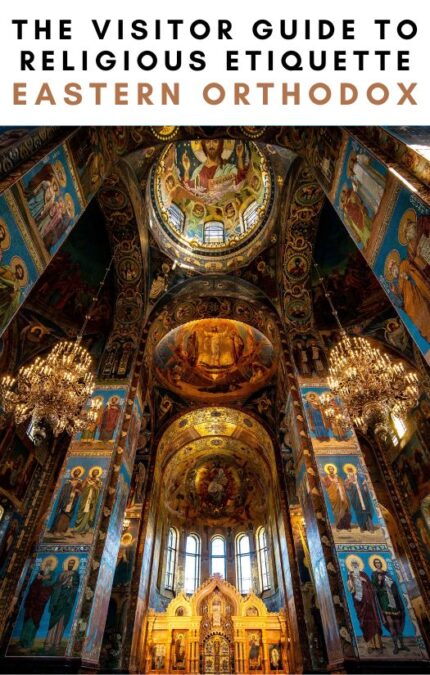
Guides
I never use guides, as I value seeing places at my own pace and following my own serendipity. In many places, this is not advisable, especially where I have limited knowledge of the history. Such things occurred for example in India while visiting mausoleums and forts of the Mughal empire, and most noticeably at the Grand Palace in Bangkok where I was stunned by the intricate painting on the palace walls depicting all sorts of historical and mythological scenes which I did not recognize. Meteora is somewhere in between as one might want to visit the region just for the natural aspect and admire the rock formations, or the peaceful and extreme nature of the monasteries. However the chapels are filled to the brim with Christian iconography and if someone is not well-versed in knowledge of this religion, they might miss a lot of interesting details. That being said, the only guides that I saw were part of massive tours that came by bus, and that filled the whole place. Personally, I don’t like this way of visiting as it seems like masses of robots and cows moving in unison while the guide tells basic facts. Perhaps being able to get a personal official guide who can point out interesting details is the best solution here.
Weather
Meteora is not at a high elevation (330m) so don’t expect a mountainous climate. The weather is akin to the rest of mainland Greece, namely the Mediterranean continental. This means there are hot summers and cold winters.
Clothing/Gear
Apart from the dress code when entering the monasteries, the clothes needed for visiting Meteora depend on the season. In summer the heat can be quite high even with the frequent clouds so sun protection/hat/sunglasses should be worn. Winters are cold so a sweater is advised.
Wearing comfortable shoes is also important and having some water or snacks if planning to visit all day as there are very few beverage/food stands and only in front of the major monasteries.

